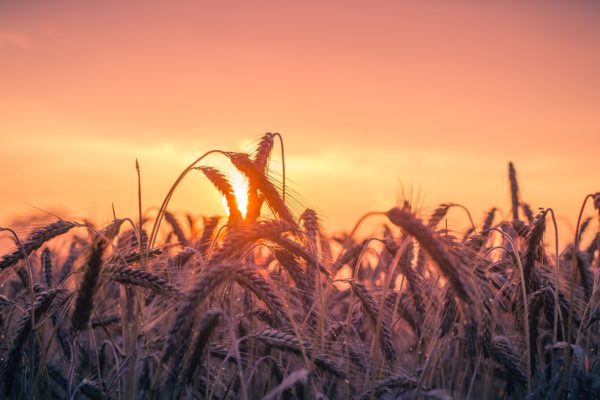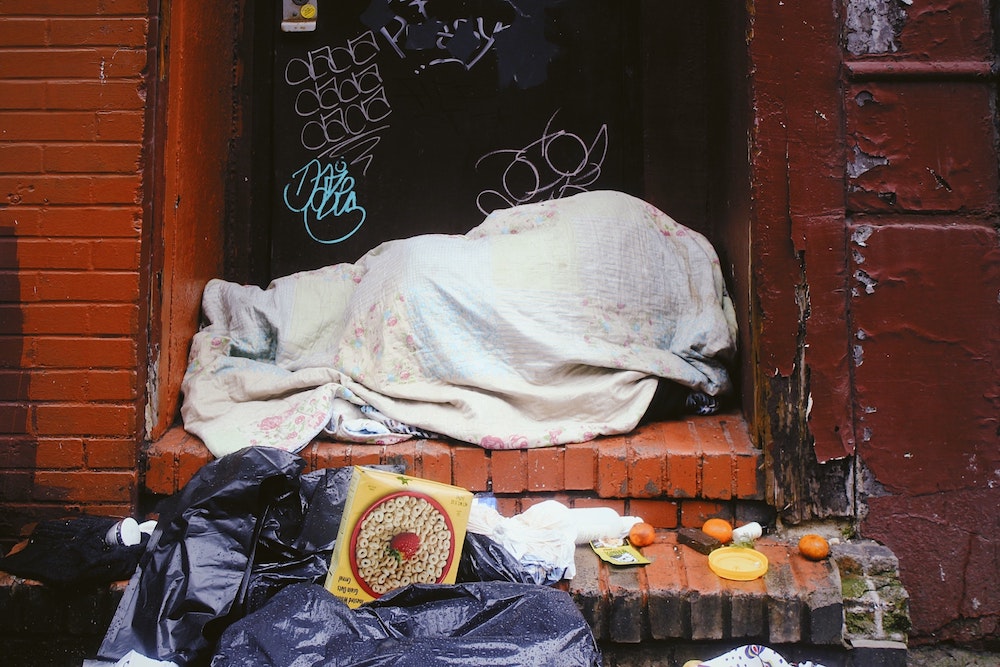Driving down a Hamptons country lane, past acres of potatoes and wheat, I turned right at the grey barn. Pete Ludlow gave me directions and since he’s a farmer, he didn’t mention the smattering of McMansions and old colonial houses that dotted the road. Pete only saw land, telling me to turn after two cornfields.
As I got out of the car, the July humidity knocked into me. I smiled.
The heat was a good thing. I’d been waiting for it. For the past month, we were going back and forth about covering his rye harvest for our local paper. Finding a time when we were free and the rye was ready was becoming increasingly difficult. The last few days were overcast, which made the crop too wet.
See, grain is fickle: if it’s too humid during the harvest, the rye will plug the combine. If you thresh the grain too early, before it has ripened, it will ferment. We’d tentatively agreed to meet at some point at the beginning the week, when Pete thought the rye would enter that perfect window of opportunity.
My deadline was fast approaching; I hoped that the sun would hold.
—
I have known Pete since we were both pre-teens; he played the piano in our local youth orchestra and I played the violin. Although he grew up in the hamlet next to mine, and was a grade older, when you’re raised in a town with a year-round population of only 10,000, your lives have many points of intersection.
As a fourth-generation dairy farmer, Pete was a central figure in the agricultural community that I was covering for the Southampton Press. Although the 30-year-old was frequently mentioned by name by the other growers, when I’d call him for a quote or see him in the fields, I still saw him as the same gentle boy as years before, more comfortable on the periphery than center stage. And yet, in his quiet way, he’d become an advocate and mentor for the newest crop of farmers, bridging the gap between locals and transplants.
Most notably, he was an instrumental part of The Wheat Project, an effort by growers to re-introduce the staple crop to our food bed. While many boutique farms raise hundreds of varieties of vegetables and fruits, wheat cultivation is still conspicuously missing from the Northeast, despite its predisposition to the climate.
Started by Katie Baldwin and Amanda Merrow of Amber Waves farm in 2009, The Wheat Project’s influence is felt all over the Eastern End of Long Island, a region more commonly referred to by outsiders as the Hamptons. From a farm-to-table bakery that only uses locally-sourced inputs, to a smattering of growers who followed suit and re-introduced the crop, the idea of eating bread or flour that was created entirely on the East End is now commonplace, less than a decade later. By all measures, their project has been a success.
Across the country, the slow food movement is embracing the idea of cultivating staple crops locally, returning to the more traditional ways of farming that were erased by the rapid industrialization of agriculture following World War II. Instead of shipping potatoes from Idaho and corn from Iowa, environmentalists are advocating for eating what’s growing nearby. Although it’s a simple concept in premise, this idea completely upends food distribution systems that are analogous to modern life.
Pete met ‘the girls’ (their nickname) at the Montauk Farmers Market, while he was selling cheese and meats next to their specialty vegetables. He lent them his antique combine, a machine that efficiently harvests grain, for their initial crop and eventually ended up growing wheat on his acreage for the initiative.
Environmental activists and organic advocates considered it to be a huge step forward for sustainability, and not just in our community. If we could pull it off in the so-called Hamptons, where there is a seasonal demand for specialty-goods, perhaps the model could move elsewhere.
—
I say so-called Hamptons, because as a local, I’d die before calling it that. We call it the East End.
By our definition, the East End is smattering of hamlets and villages, a 45 mile-long peninsula off Long Island that is bordered on one side by the Peconic Bay and the other by the Atlantic Ocean. It is carpeted with farmland and pitch pines and ponds and oak trees, edged by sand dunes and estuaries and the sea.
In the summer, we go clamming at low tide and in the fall we dive for scallops. Bunker begin running in June, but we call them shad, after the shadberry tree that blooms at the same time the fish appear. The stripers are plentiful by July, and in October we have competitions for who can catch the largest. Black and white champion photos are printed in the newspaper. November is the beginning of deer and duck hunting season; or as I consider it, the worst time of year to go on a hike.
And while that’s how locals would define our area, ‘the Hamptons’ label stamps out that nuance.
—
Twenty minutes after I’d arrived at the farm, Pete pulled up in an antique red tractor. A burly young man with floppy brown hair, he waved hello as he slowly chugged down the gravel path.
Before we could head out to the field, Pete had to attach a threshing header to the combine in order to harvest the wheat. We sat close together in the machine’s small cab as he attempted to attach the thresher via hydraulic cables. Lowering the front of the combine again and again, his hand movements reminded me of a teenager playing a video game. His eyes trained on the thresher, Pete told me that the advantage of a combine is its ability to go from zero to high speeds very fast, allowing for quick movements in the field.
After ten minutes it became clear that the equipment wasn’t attaching, despite the fact that the thresher was designed to fit onto this combine. The machines were loosely connected so we could chug outside where the sunlight might illuminate the problem with the cables.
We pulled next to the weathered barn and Pete hopped down. There was no AC in the cab and I was grateful for the fresh air, even though we’d spent a mere twenty minutes maneuvering the machinery. The harvest would take at least three times as long.
Crouched between the thresher and the combine, Pete paused to wipe grease onto his cargo shorts. I tried to take pictures while I interviewed, at times shouting my questions so that he could hear me as he tinkered on the cables. As farmer luck would have it, the one wrench that could fit the machines together was at the dairy barn, which was a few miles away.
“The diversity of what we’re doing here [is what] I really like,” said Pete. “Being able to do so many different crops, all going to the greater good of the dairy and the cows.”
Pointing out that for most farmers wheat is only profitable as a large-scale crop in drier areas like Kansas or the Midwest, Pete says that the boutique cultivation – at most a few acres a year – is only possible in a place like ‘the Hamptons.’
“We have that base of people who are interested in the local or homegrown. In Pennsylvania, an agricultural region, you don’t have that same appeal. Everybody can grow wheat if they wanted to, but nobody does because there is no market for it,” said Pete. “They grow corn and soybeans for their animals and the commodity market because those are the most valuable crops.”
Looking at the broader story of the loss of farmland on the East End, the high-end market is both a blessing and a curse. If land values hadn’t skyrocketed in the 1980s, 1990s and early 2000s, the Ludlows would likely still be wholesaling potatoes. Pete’s dad, Art, was pushed into the dairy business when the family was unable to lease enough farmland for their operations. The wholesale market offers small margins, and thus requires more land to turn a profit. When owners began developing land for residential uses rather than leasing it annually to farmers, it constricted growers up and down the South Fork.
Southampton Town lost 27.7 percent of its acreage between 1970 and 1998, dropping from 11,663 acres to 8,428 acres, according to the town’s report prepared in 1998. Since then, local farmers estimate that an additional 25 percent of the arable land has been taken out of production. If the town loses any more land to development, many growers fear that we will cease to be an agricultural area, instead becoming a resort community. Some say we already hit that tipping point in the 1980s.
After tinkering around on the machine for an hour, Pete decided to switch combines. It turned out that we had been testing a neighbor’s new machine for him. Since this was our only opportunity to harvest the rye, Pete now figured we should use his family’s combine, which he knew attached to the header.
And so, we went back into the low-lit dusty barn again for what can only be described as an oversize Tetris game. Although what was supposed to be a one and half hour chore was now taking nearly five, there was a joy about Pete as he bounced between the tonnage: here was a man who enjoys heavy machinery.
Once the equipment was ready, we drove toward the five-acre field for harvest. Since so much farmland has disappeared in the past thirty years – over 10,000 acres in Southampton Town alone – this awkward procession between far-flung fields on roads is a common grievance of East End farmers. As it stands now, Pete estimates he spends a few hours a week just driving equipment from one field to another on his family’s 35-acre farm.
From the dirt-streaked window I saw swathes of fields, the careful lines of bushy potatoes and knee-high stalks of corn that are emblematic of mid-July; in two more weeks, it will be impossible to see over the corn. Tracts of land are circumscribed by oversized new houses; it looks like pools and tennis courts have taken bites out of farmland in squared, manicured nibbles. I tried not to imagine what will be left in another ten years.
“There wasn’t necessarily a place for me so I had to make it work,” Pete explained to me, when I ask how he started with The Wheat Project. A fresh-faced college graduate, Pete moved back to Bridgehampton and needed to make a place for himself on the family farm. His father was managing the cheese-making business and so Pete decided to expand into field work. By growing the inputs for the family farm, he could help cut cost of feeding and bedding the cows, thus earning his keep.
As we chugged along at ten miles per hour, there’s a steady stream of cars making their way to the beach behind us. Describing the process as a “little game of chicken,” Pete remarked that it’s always fun driving a combine with a 15-foot thresher down the road.
Pointing to the fields along the way, Pete told me which farmers rent and own which tracts of land outright. We skipped over the houses. It’s as if an entire map of the arable land had been superimposed in his mind. Sweat beaded down my back and forearms and I hoped that I wasn’t dripping too much on my camera.
As we entered the fields and began threshing the rye, there was a steady plunk, plunk, plunk of berries hitting the windshield. This, Pete told me, is a good sign; it meant we were harvesting the grain at the perfect time.
He will use the rye berries to plant a cover crop next year. The leftover straw in the field he will then bale up and use as bedding for his cattle. This full circle approach to farming is part of the reason why Amber Waves and Mecox Bay Dairy make great partners.
Although the threat of development lurks at the corners of life in the so-called Hamptons, rearing its head as Pete drives the combine down a country lane filled with the traffic of sports cars or when news of another family farm being sold is printed on the front page of the paper, Pete doesn’t share his concern about his family’s property with me.
For now, this good ground that he tills and plants and harvests is his daily preoccupation. As Pete told me at the end of our interview, the East End is “right at the forefront [of the local food movement]. Look at all the stuff we have out here. All the vegetables, all the fruits, the bread…these Long Island soils, specifically Suffolk County, specifically the Hamptons, the soils are fantastic. We can grow anything.”
A freelance journalist and columnist, Alexandra Talty is based in Beirut, Lebanon. Her work appears in a variety of organizations including Playboy, Forbes, Electric Literature, Roads and Kingdoms, Middle East Eye and Civil Eats, among others. She is currently working on a nonfiction book about young farmers in the Hamptons and the unique pressures they face in one of the most expensive zip codes in the world, after reporting on her hometown for a bimonthly agricultural column in The Southampton Press.




